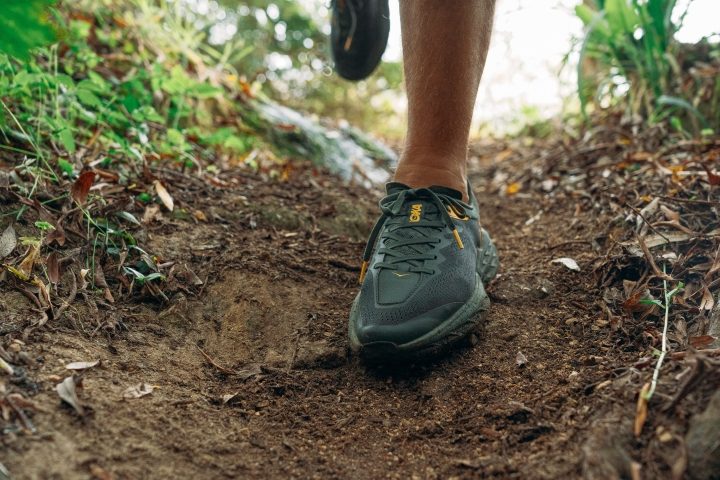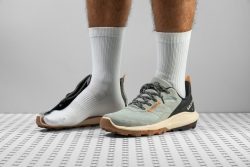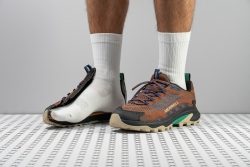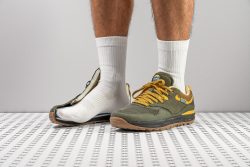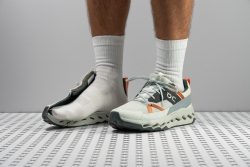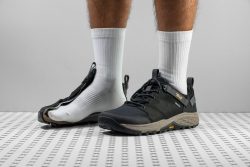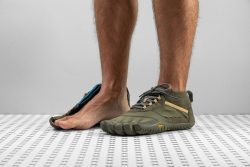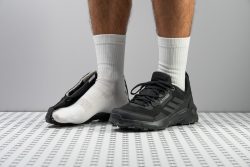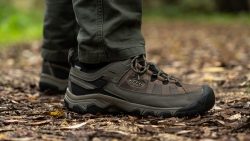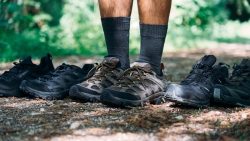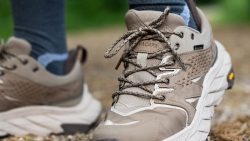7 Best Shoes For Light Hiking in 2025
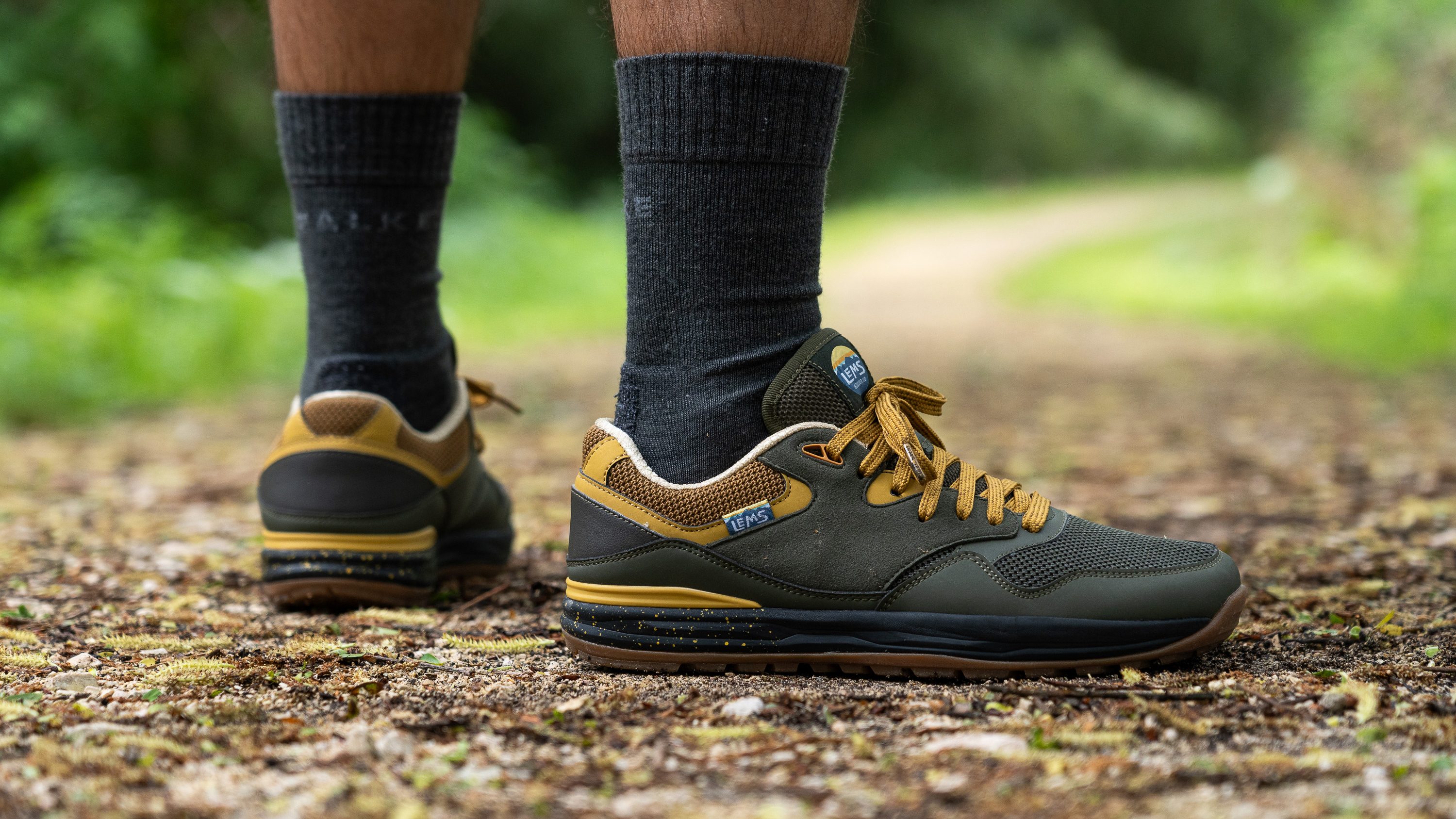
We buy shoes ourselves. We earn commissions when you buy through us, at no extra cost. Why trust us
These great-looking trail-to-town shoes are ideal for daily on-foot adventures, integrating the latest technologies in footwear construction that deliver more comfort, flexibility, and protection.
To make your browsing experience easier and hassle-free, we’ve tested and ranked shoes for light hiking. We have evaluated them categorically during our long process of testing so we can be sure in which area they truly excel. Now, it's up to you to choose a pair based on your preferences!
How we test shoes for light hiking
Each pair of hiking shoes on this list was thoroughly tested on the trails. We analysed the quality of materials and technologies built into the shoes and how they perform in the real world.
Here’s what we do:
- We buy shoes for light hiking with our money. This is to ensure our impartiality when publishing our reviews.
- We hiked in these shoes on the trails and in road-to-trail activities, and we wore them in urban settings. During this time, we double-checked every important aspect of the shoes, including fit, comfort, water resistance, durability, and more.
- We also tested these shoes in our lab, and the results (20+ data points) went on to confirm that these shoes are great for light hiking. Next to each test, we elaborate on the findings. We covered everything, from lug depth, traction, and outsole durability to shock absorption and midsole flexibility.
Best shoes for light hiking overall
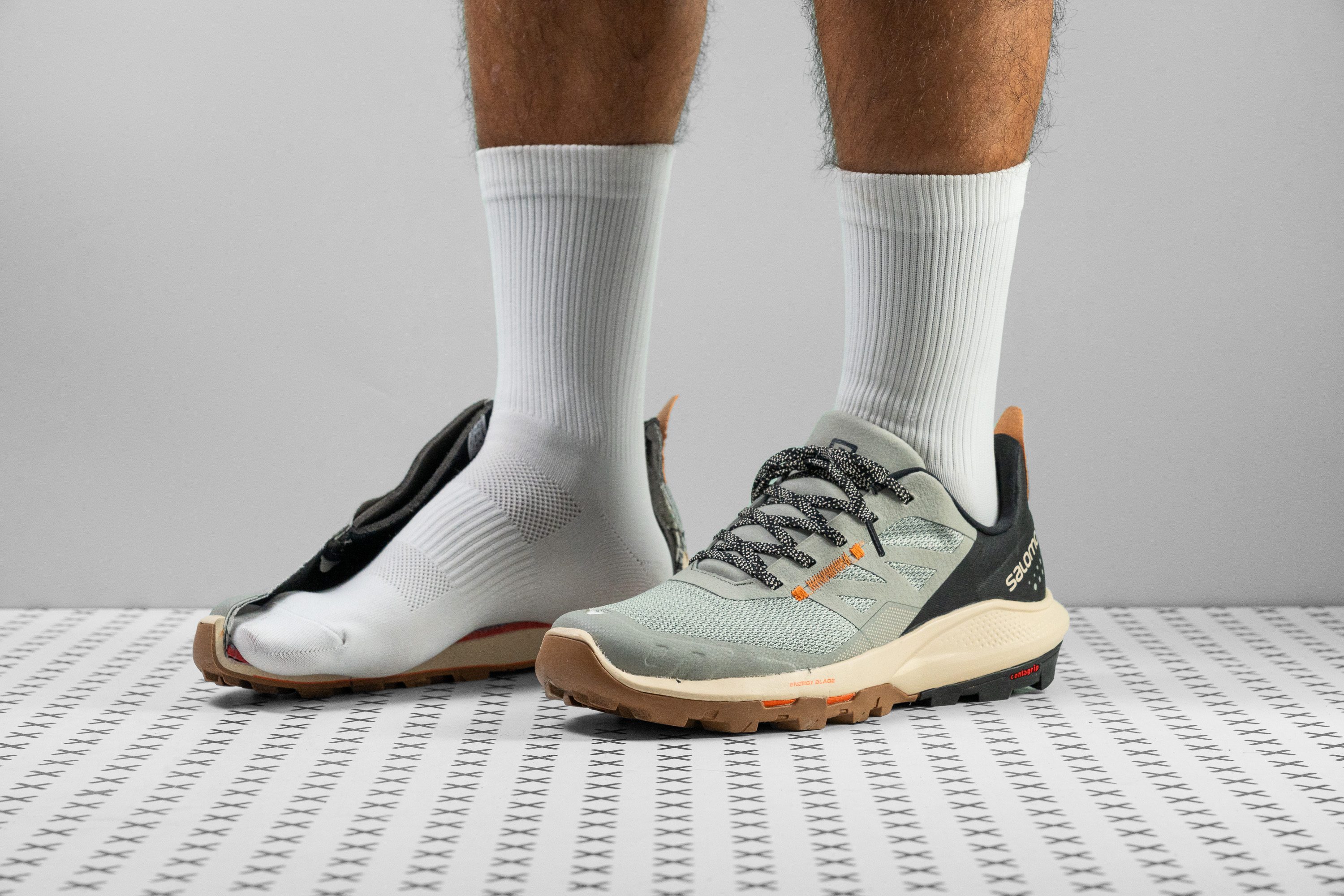








































What makes it the best?
Our light hikes were an absolute dream while wearing the Salomon Outpulse. This ultra-lightweight hiking shoe feels springy and lively underfoot and delivers excellent grip that keeps us stable if we want to break into a trot. We love the Salomon Outpulse, and it gets our vote as the best overall shoe for light hiking.
The Salomon Outpulse is so light that it was almost possible to forget we were wearing shoes at all! Tipping the scales at just 11.6 oz (329g), it is 1.8 oz (50g) lighter than our lab average, and one of the lightest hiking shoes in our database. Our feet felt agile and free on our hikes, and we had plenty of energy left at the end of our hikes.
Adding to that nimble feeling is the superbly springy midsole, which is instantly noticeable straight out of the box. When we pressed a durometer to the midsole in the lab, it measured 22.6 HA - a number more in keeping with a running shoe. We felt carefree and energetic while walking, making our light hikes even more enjoyable.
Smooth rock or gravel, wet or dry ground or mud; these shoes seem to grip it all. We measured the depth of the lugs in the lab, and while at 4.1 mm they are only 0.1 mm deeper than average, the intricate, multidirectional lugs play a huge part in the impressive traction of this hiking shoe. In addition, scoring a middling 3/5 in our torsional flexibility tests, Salomon Outpulse flexes with our foot on uneven ground, further increasing the grip.
The reinforced toe box of the shoe stands up only moderately to our Dremel test in the lab, leading us to issue a middle-of-the-range 3/5 for toe box durability. While this shouldn’t be a problem for light hiking use, hardcore adventurers may want to look into a more robust hiking shoe.
Pros
- Grippy and durable lugs
- Extremely breathable
- Lighter than average
- Protective and bouncy midsole
- Great for long hikes
- Speedy and tenacious
- Comfortable and high-quality upper construction
- Secure lockdown
- No break-in required
- Performs consistently in the cold
Cons
- Not ideal for wide feet
- Tongue slippage
Light hiking shoes with the best comfort
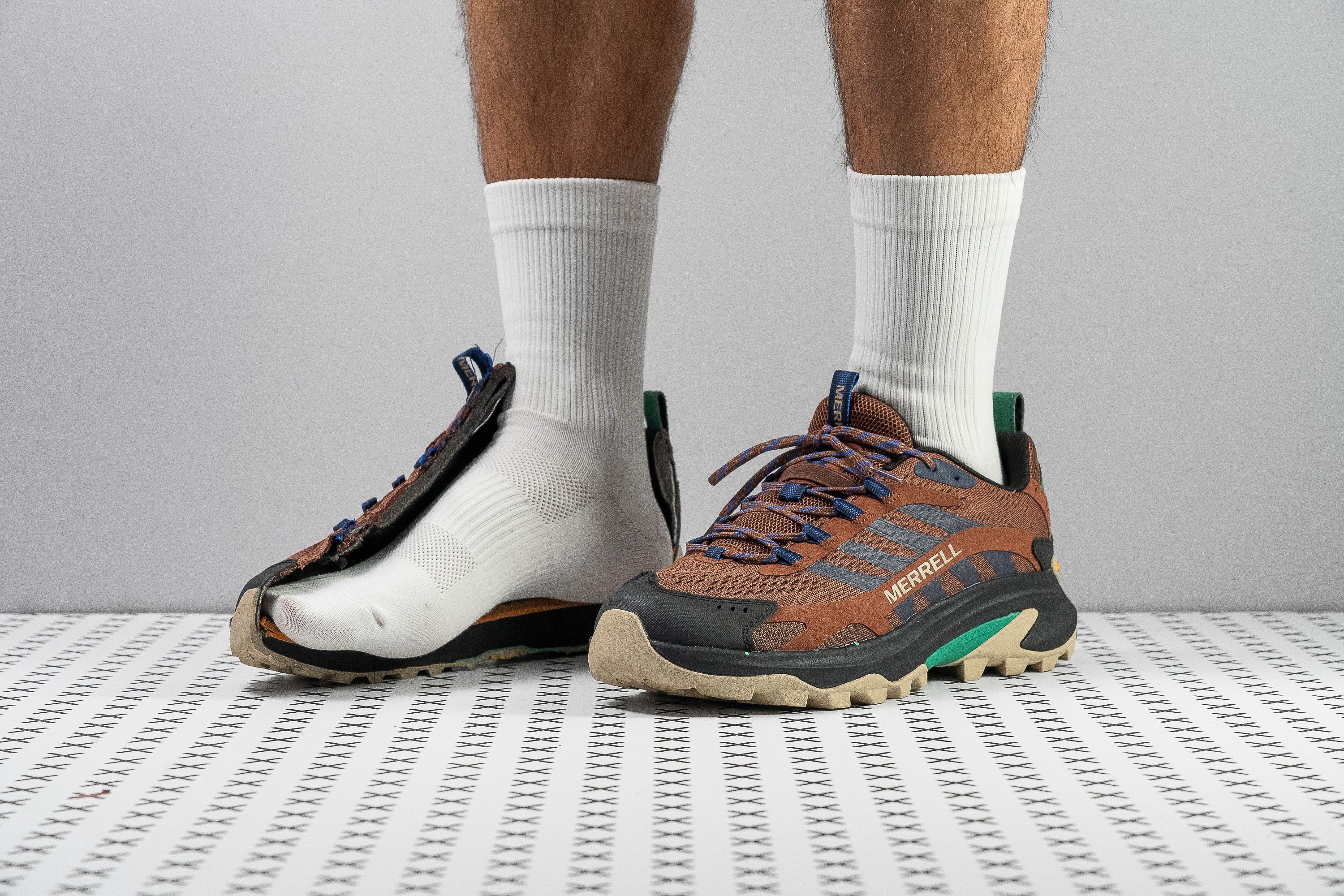























































What makes it the best?
Among light hiking shoes we tested on foot and in the lab, the Merrell Moab Speed 2 delivers top-tier comfort because it has all the elements that will make us last longer, and even go faster! From its breathable upper to its plush cushioning, it packs much-needed comfort and support for our outdoor escapades.
We could go on all day with this pair because each foot feels effortless to lift and is met with a plush foam upon landing. Our scales reveal a mere 11.6 oz (329g) build, significantly lighter than the 13.4 oz (379g) average. This boosts our agility and makes the experience more effortless.
Yet even with its weightlessness, we’re surprised with its abundant 38.8 mm heel! Our durometer reveals a light and plush 19.0 HA foam, which is 31.4% softer than average. We like how even with its comfy touch, we never sank into the foam because of the FlexPlate that supports us underfoot.
Our feet felt good even during warm humid days because the mesh upper gave us room to breathe. As our smoke test confirms, this shoe is well-ventilated (4/5) which adds to the comfort of longer hikes.
However, its thick stack and steep 15-mm drop lack the ground connection other hikers prefer. Those who want a more natural feel should explore elsewhere.
Pros
- One of the lightest hiking shoes
- Plush and abundant cushioning
- Great support and stability
- Perfect grip for moderate terrain
- Excellent durability
- Breathable for summer
- Cosy step-in feel
- Two loops for easy on-off
Cons
- Frail inner lining
- Small debris gets inside
Best town-to-trail shoes for light hiking
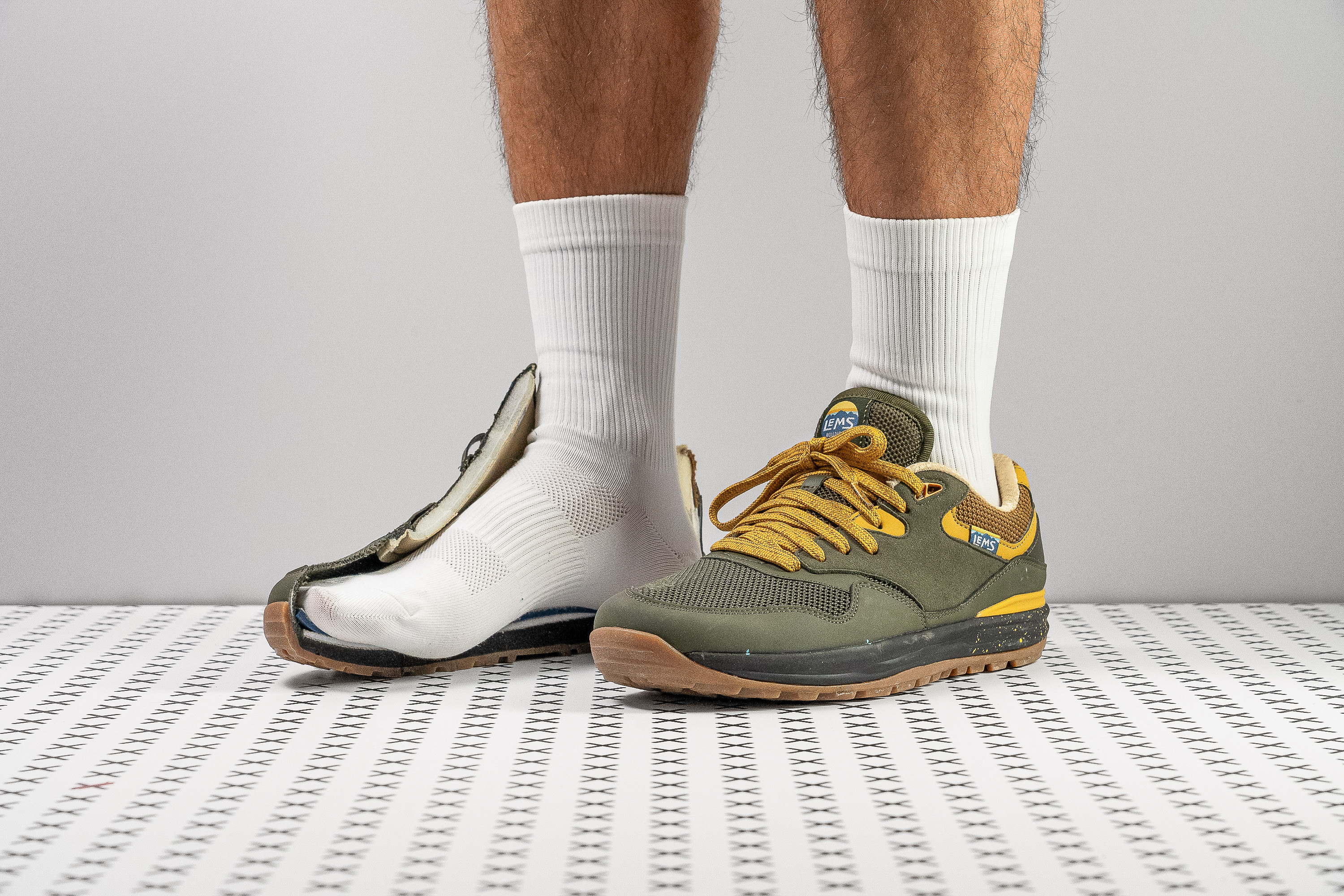


















































What makes it the best?
Moving from city streets to rugged trails never felt so seamless until we tested the Lems Trailhead. Among light hiking shoes we lab-tested, this emerged as a light and fuss-free shoe with grippy yet unobtrusive lugs, making it our top pick for town-to-trail adventures.
Our effortless strolls made Trailhead easy to wear on casual days. It feels like a sneaker on foot, freely bending in sync with our feet. As confirmed by our lab test, it’s 18.0% more flexible than average.
Another feather to its cap is its barely-there feel—weighing only 11.9 oz (337g) vs. the 13.3 oz (377g) average—attributed to its grounded 27.1/21.7 mm stack that provides a healthy mix of impact protection and surface feedback.
The outsole underfoot is what seals the deal. It proved resilient against our Dremel by showing a minor 0.7 mm dent vs. the 1.0 mm average, meaning it can withstand tough city surfaces like concrete and asphalt. Meanwhile, the 3-mm lugs’ traction comes alive when we step on loose and soft ground. We found this depth grippy enough on the trails and comfortable enough for the streets.
However, this Lems shoe took minimalism seriously in the midsole. With below-average measurements, we can’t recommend this shoe to those with bunions or wide feet.
Pros
- Perfect trail-to-city shoe
- Notably lighter than average
- Wear-resistant upper and outsole
- Grounded platform
- Low heel-toe drop confirmed
- Very flexible construction
- Upper follows natural foot shape
- Great grip for moderate terrain
- Vegan materials (in most colorways)
- Perfect for mild demi-season weather
Cons
- Not for wide feet
- Tongue slides sideways
- Not for warm weather
Shoes for light hiking with the best shock absorption
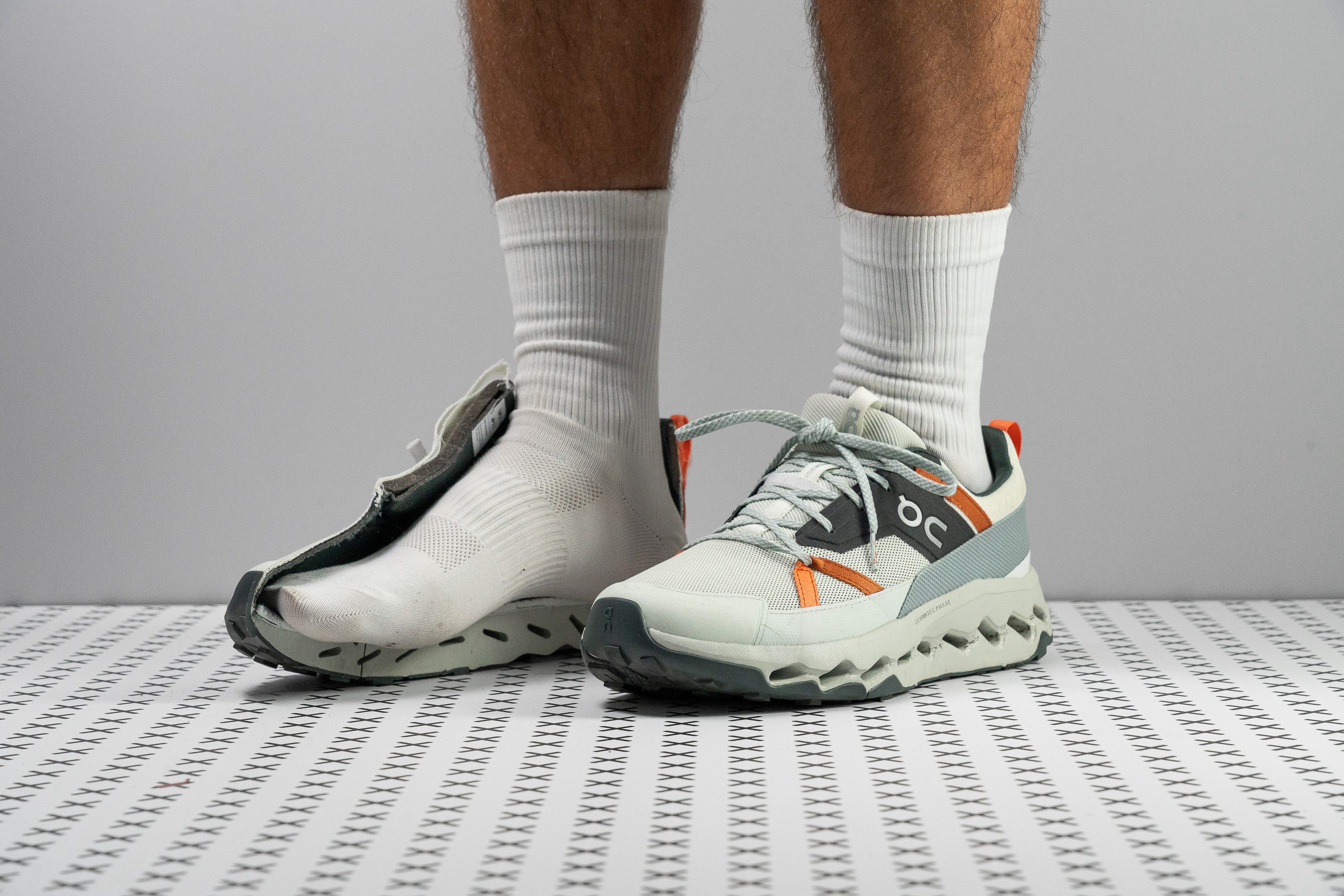






















































What makes it the best?
The On Cloudhorizon is a standout paradox in our lab's light hiking category, delivering the best shock absorption at minimum weight. No matter how long we stayed out, we never ran out of comfort in this cushioned and springy shoe. It’s extremely stylish and makes us feel good in terms of looks and in-step feel.
Starting from its main feature: the Helion midsole is a massive 35.5/26.4 mm, giving a lot of buffer between our feet and the ground. Shock absorption is otherworldly as it features On’s CloudTec technology that also returns a bit of pep in our strides. We found in the lab that it offers 26.7% better impact protection than average with its 133 SA rating, explaining why the shoe feels exceptionally softer than its 26.3 HA durometer reading.
Riding more like a trail shoe, we already noticed how light the shoe was during testing. Yet the scale blew our minds with an 11.0 oz (312g) reading, by far the lightest we’ve seen in the lab. That’s a whole 2.2 oz (62g) lighter than the average hiking shoe! Adding to its weightlessness is the rocker structure that fosters smooth forward transitions, helping us to sustain our momentum with less effort.
However, the 2.5 mm lugs were also kept to a minimum. Therefore, we cannot recommend this sneaker-like shoe for rocky, muddy, and technical terrains.
Pros
- Excellent cushioning and impact protection
- One of the lightest hiking shoes
- Transitions from city to trails seamlessly
- Nice and smooth heel-to-toes
- Breathable for mild weather
- Comfortable in-shoe feel
- True to size and fit
- Great grip on smooth and wet surfaces
Cons
- Not a real hiking shoe
- Lacks durability for the price
- Not very stable
- Not for soft terrain or mud
Best light hiking shoes with a wide toebox
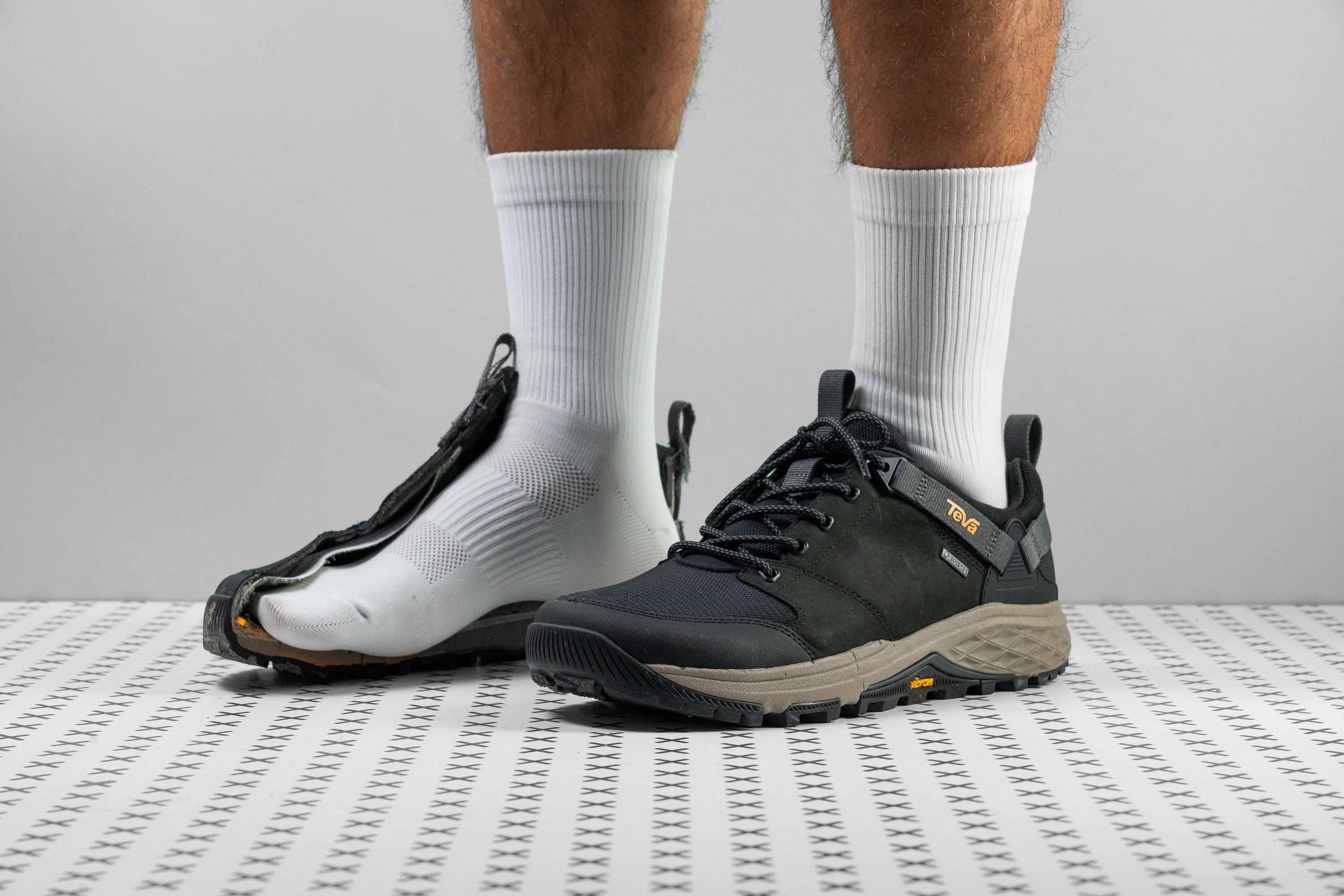














































What makes it the best?
We tested this shoe in a series of lab trials and test hikes, and it came out on top in terms of wiggle room for our toes, midsole comfort, and stability. This low-topped shoe is ideal for our shorter adventures, so we crowned the Teva Grandview GTX Low our best light hiking shoe with a wide toe box.
We are long-time fans of Teva’s roomy toe boxes, so it wasn’t a surprise to find our digits have plenty of space to splay and grip on our hikes. Back in the lab, we took our trusty callipers in hand to crunch some numbers. The widest part of the shoe measures 3.2 mm wider than average, but the Grandview GTX Low goes the extra mile around the big toe. Measuring a whopping 87 mm, we have a full 5.4 mm extra space for our toes compared to our lab average! This is excellent news for hikers with wider feet!
Straight out of the box we were struck by the incredibly plush underfoot feel. In the lab, we pressed a durometer to the midsole, we found it to measure an almost unbelievable 15.3 HA, 100% softer than average! Balanced by an additional 3 mm of cushioning both below the heel and the forefoot, the Teva Grandview GTX Low is an indisputably comfortable ride, making for highly enjoyable light hikes.
This shoe treads the line perfectly between comfort and stability. On our hikes, we felt stable and supported - even on rough trails we felt no risk of rolling an ankle. In the lab, we measured the width of the midsole. The Teva Grandview GTX Low once again outshines the competition, measuring 6.6 mm wider than average at the forefoot, and 3.1 mm wider than average at the heel. No wonder our landings felt so steady and safe!
The trade-off to all this comfort is a heavier-than-average weight. Tipping the scales at 15.6 oz (441g), the Teva Grandview GTX Low is 2.2 oz (62g) heavier than average. We recommend that hikers looking for a lightweight kick look at other options.
Pros
- Excellent waterproofing
- Softer than average cushioning
- Great impact protection
- Remains soft and flexible in low temps
- Very stable and supportive
- Deep lugs with top-notch grip
- Comfortable in-shoe feel
- Good wear resistance
- A dream for wide feet
Cons
- Heavier than average
- Not for narrow feet
- Heel lock is fiddly
Best barefoot shoes for light hiking
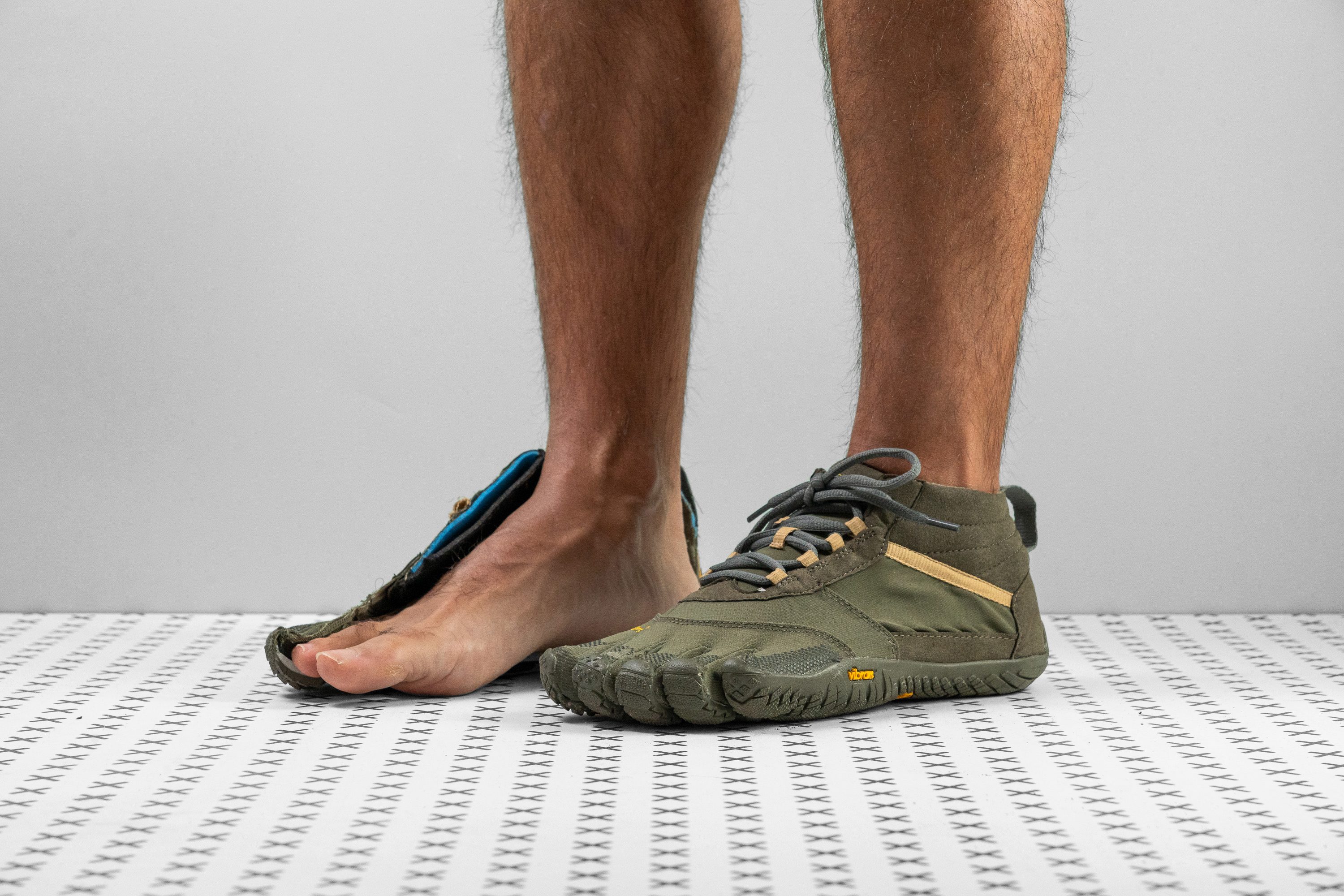








































What makes it the best?
The characteristic silhouette of the Vibram Five Fingers V-Trek screams barefoot hiking, so we put it through its paces in the lab and on the trail. With its impeccable stability, featherweight, and impressive durability, the Vibram Five Fingers V-Trek gets our vote for the best barefoot shoes for light hiking.
A minimalist shoe uses a small amount of material to achieve a snug fit, and the Vibram Five Fingers V-Trek is no exception. While the midsole width is significantly lower than our lab average - 5.5mm less at the forefoot and 22.7mm less at the heel - the barefoot nature of the shoe makes it mould perfectly to our feet without compromising our foot’s natural stability. We also bent, twisted, and scrunched the shoe manually, awarding it the least rigid score of 1/5, compared to the average of 3.3/5. As is fitting for a barefoot shoe, the Vibram Five Fingers V-Trek aims for a barely-there feel, which makes us feel stable and grounded on all terrain.
Weighing in at just 6.5 oz (184g), the V-Trek is a whopping 51% lighter than average, adding to its minimalist feel. While we might have expected such a wisp of a shoe to compromise its durability, our test hikes and lab analyses tell a different story. Utilising a Dremel at 5K RPM at a force of 3.2N for 12 seconds, the reinforced toe showed only a minor scuff. We awarded it a high 4/5 for durability, placing it slightly above the average of 3.7. Applied to the outsole, the Dremel left a mere 1.1 mm dent, comparable to the average. Contrary to its pared-down appearance, this shoe is up there with the typical offerings, and we trust it to last us 4-500 miles.
With a heel stack of just 9.9 mm, the Vibram Five Fingers is 64% closer to the ground than average. While this is to be expected in a barefoot shoe, heavy heel strikers and those just getting into barefoot hiking may prefer a bit more cushioning below the heel and should look into other options.
Pros
- Top-notch comfort
- Superior level of protection
- Powerful grip and traction
- Glove-like fit
- Incredibly Supportive
- Durably built
- Performs consistently in the cold
- Quick drying
Cons
- Needs breaking in
- Hard to put on
Best budget shoes for light hiking
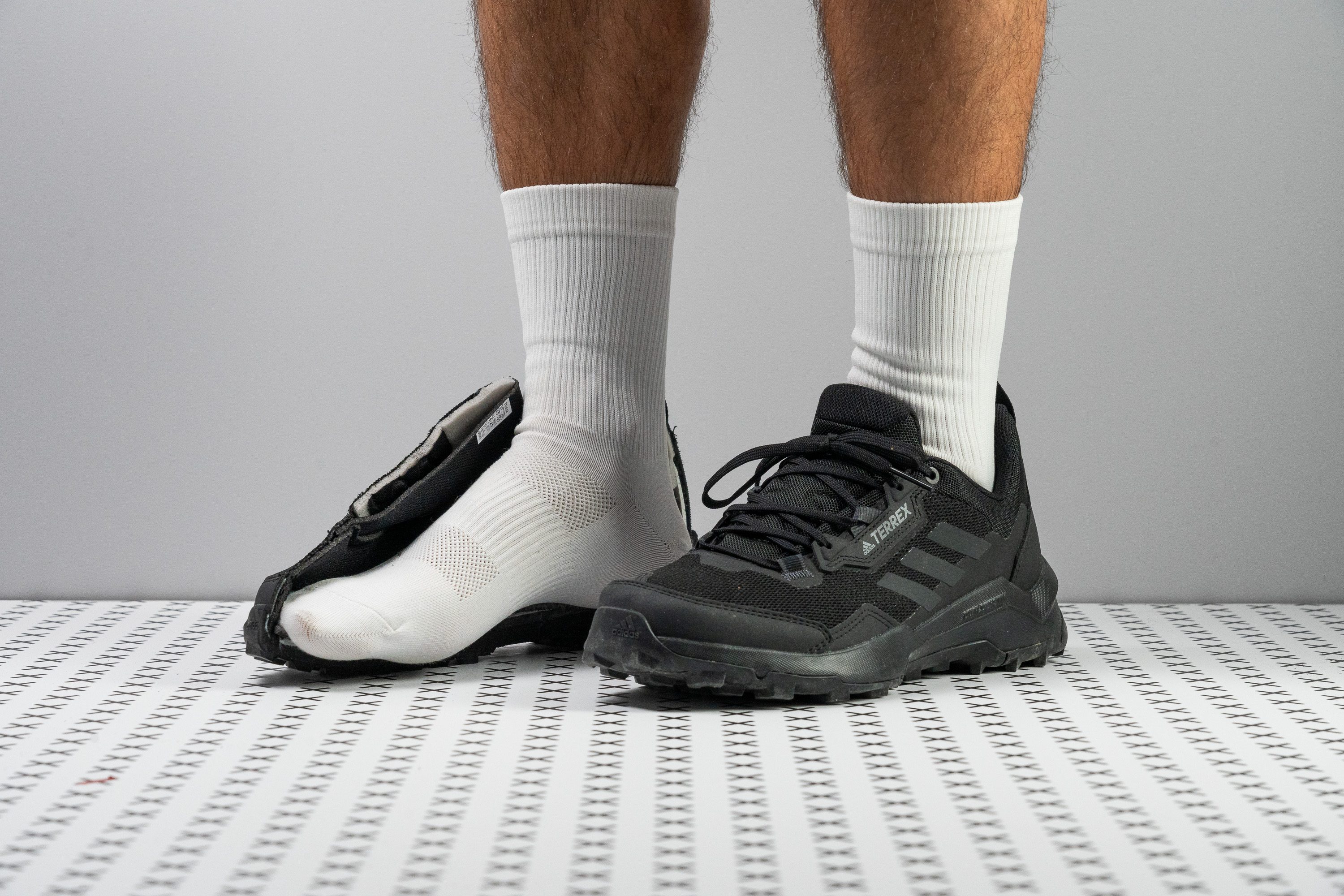







































What makes it the best?
It’s official, the best budget hiking shoes for light hiking is the Adidas Terrex AX4. £40 cheaper than the average hiking shoe, this is an impressively versatile kick. It proved itself water resistant yet breathable, incredibly stable and lightweight. At just £90, it represents excellent value for money and is the perfect shoe for short, easy hikes.
With the upper fabric under the microscope, we spied an especially tight weave which is both abrasion-resistant and water-repellent on our hikes through wet grass and light rain. The shoe performed surprisingly well in our breathability tests too, and we awarded it 3/5 for breathability compared to the average of 2.3. We love the adaptability of this all-weather hiker.
The Adidas Terrex AX4 is a wonderfully stable shoe, and we felt confident hiking on rough, slippery trails. Its wide, stable platform measures 111.5 mm, around the average, and prevents us from rolling our ankles when hiking over rocks. We experienced no heel slippage, and in the lab, we awarded the heel counter 5/5 for stiffness. It holds our heel firmly without compression.
The cushioning in this shoe is pretty firm. We pressed a durometer to the midsole, and noted 39 HA, making it 27% firmer than average. Whilst this is surely a protective shoe, it’s not the most comfortable, which is why we don’t recommend it for long distance hikes.
Pros
- Excellent value for money
- Feels like a trail running shoe
- Breathable
- Water-repellent
- Excellent grip
- Durable for the price
- Stable platform
- Contains recycled materials
Cons
- Lacks toe protection
- Flimsy insole
- Aggressively tapered toebox
How to choose shoes for light hiking
Heading out on a short and sweet hike, you want to wear something light and breezy. A pair of sturdy hikers might be an overkill for 3-5 miles on a moderate type of terrain.
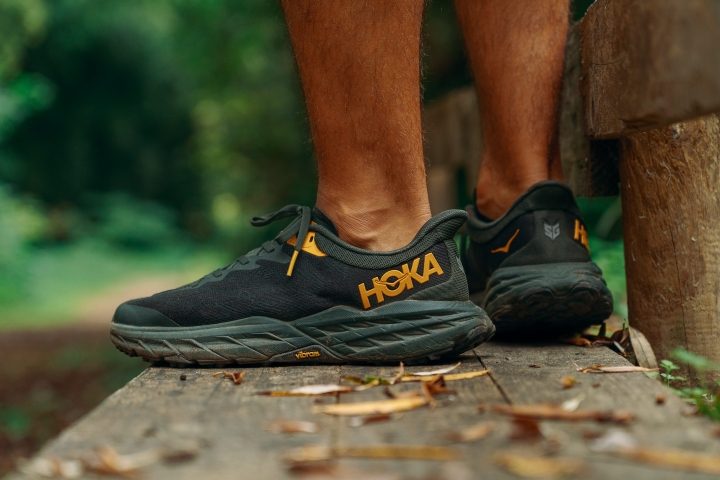
Luckily, there are plenty of options from both hiking and running shoe brands that can meet your needs on the trail.
3 characteristics of shoes for light hikes
Here is what your ideal pair will look like when you are out for a short hike on groomed terrain:
- lightweight
- flexible
- road-friendly
More lightweight to keep you agile
The average weight of a proper hiking shoe is 13.1 oz (377g). However, if we only consider the more trimmed-down options, the weight will go down significantly - to 10.7 oz (303g)!
These shoes still have all the essentials to keep you comfortable on the trail but nothing that you don't. You won't get the extra overlays, thicker upper materials, lugs, heel brakes, insulation, etc. For light hiking, having a lighter shoe that won't drag you down is the priority.
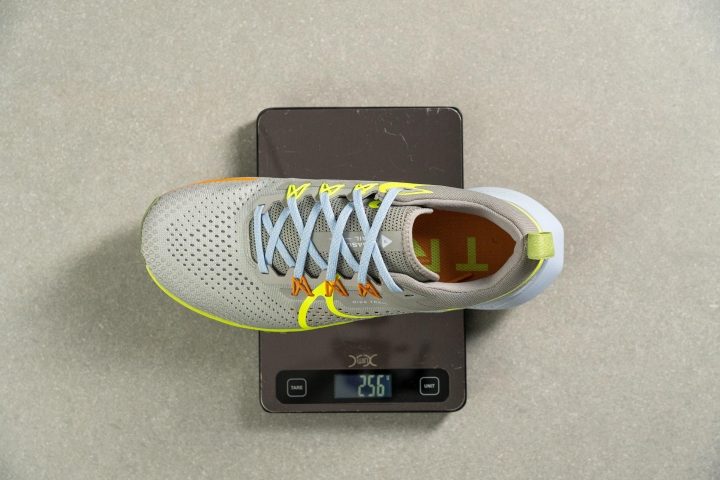
More flexible for natural movement
Most hiking shoes come with shanks and burly platforms that enhance stability and arch support. But when you are not carrying a heavy backpack, you don't need as much support from your footwear.
You will be much happier with a shoe that feels more like an extension of your foot rather than a stabilising device. A shoe with enough pliability to let your feet bend where they would naturally bend.
Easily goes from trail to road
It's quite likely that when you go on a light hike, you have to walk on the pavement or asphalt first. Or perhaps you want to stop by a coffee shop on the way down.
Shoes for light hiking tend to be more versatile in use, so you won't find 5-mm deep lugs here. These hikers come with shallower treads that won't feel too bumpy when you step on a hard surface.
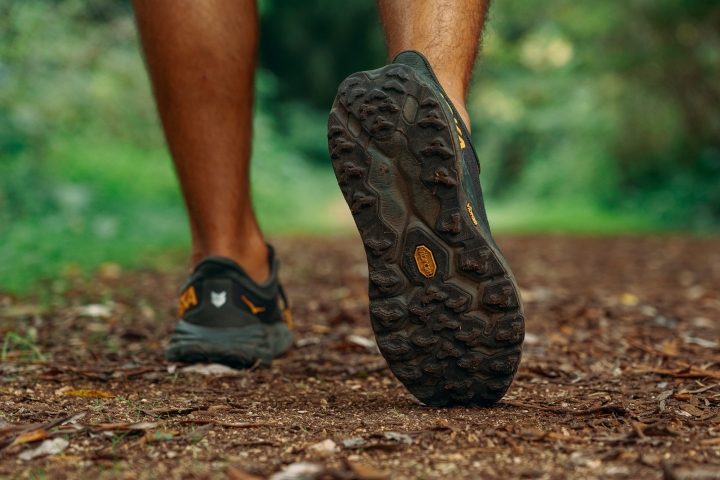
Do you need waterproof shoes for light hiking?
There is a large debate between folks who swear by waterproof shoes and others who would never put them on their feet in the first place. We fall somewhere in between the two camps.
Waterproof hiking shoes truly shine in climates that are characteristically wet, damp, icy, or snowy. In other words, there needs to be a high chance that we will experience prolonged exposure to precipitation and moisture before we lace up the waterproof hiking shoes.
Otherwise, we typically opt for something considered non-waterproof. In this case, a water-resistant or water-repellent shoe may be the best tool for the job.
The reason is that in climates and terrain that are characteristically dry or that might have occasional encounters with precipitation and moisture like stream crossings, or afternoon thunderstorms, we tend to prioritise breathability over waterproofing.
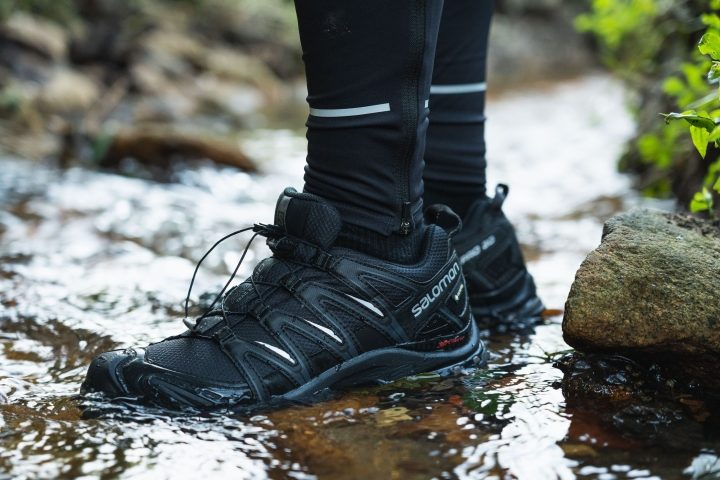
How to make shoes for light hiking last longer
It's not very likely that you destroy a pair of shoes after a few light hikes. But there are a few tricks to help you get the most out of your hiking footwear even in this scenario.
- Perform simple maintenance: Routine cleanings and monitoring for repairable damages, like the beginnings of outsole separation, can enhance the lifespan of your shoes.
- Wear them specifically for the right moments: We understand – you find a new pair of hiking shoes that feel amazing, and you wear them incessantly. We’ve done this also. But try to refrain from doing this. Instead, save your hiking shoes for legitimate outings to the trailhead. But if you must wear them all the time, maybe purchase two pairs!
- Reapply waterproof coating (if necessary): Over time, the waterproof DWR coating may wear out. We’ve discussed this important maintenance task earlier in the article, but here is another friendly reminder.
- Focus on your footwork: When our legs and feet get tired, our precise footwork on the trail diminishes. To mitigate this inevitability, focus on improving your footwork to decrease the wear and tear your hiking shoes are exposed to.
